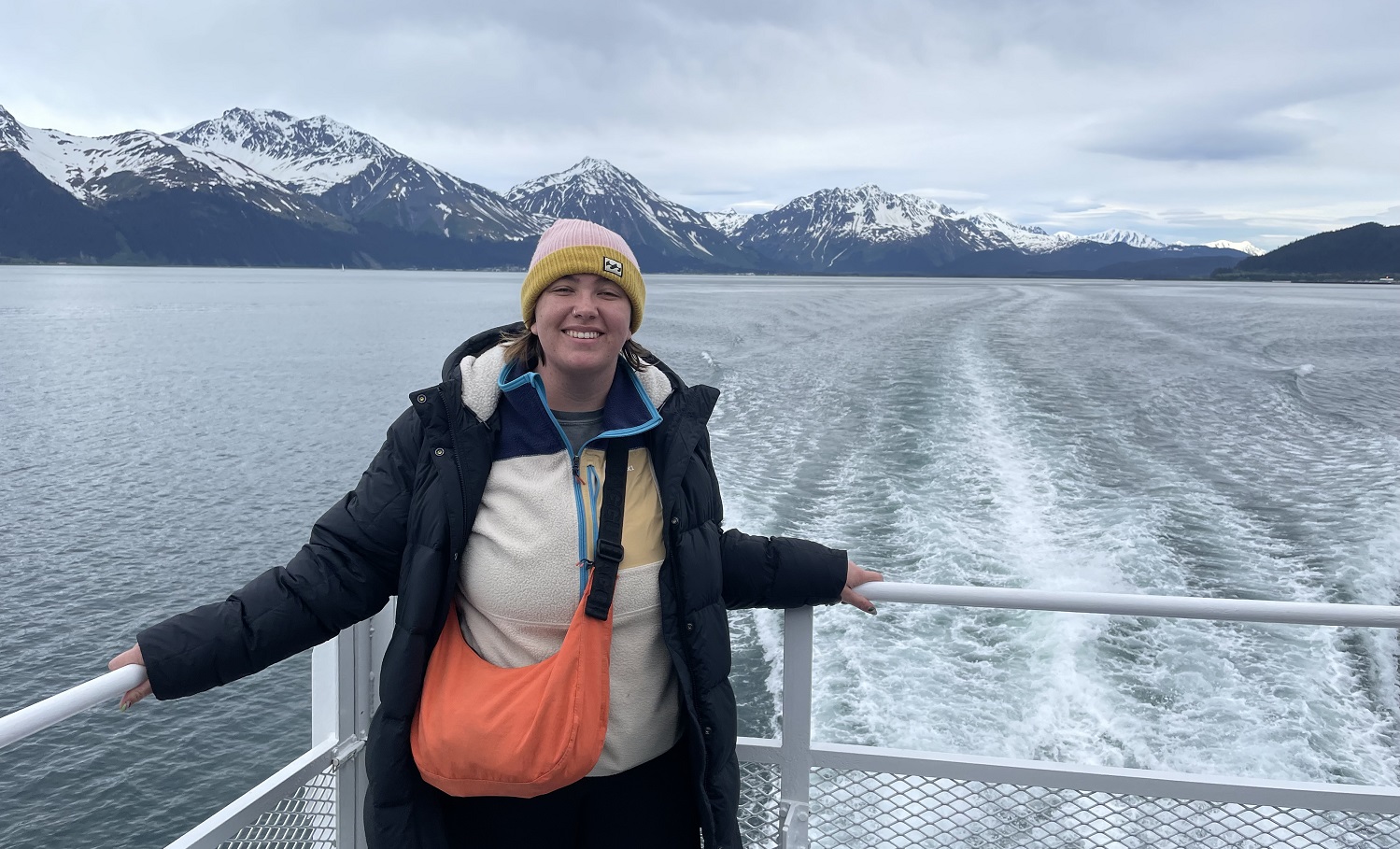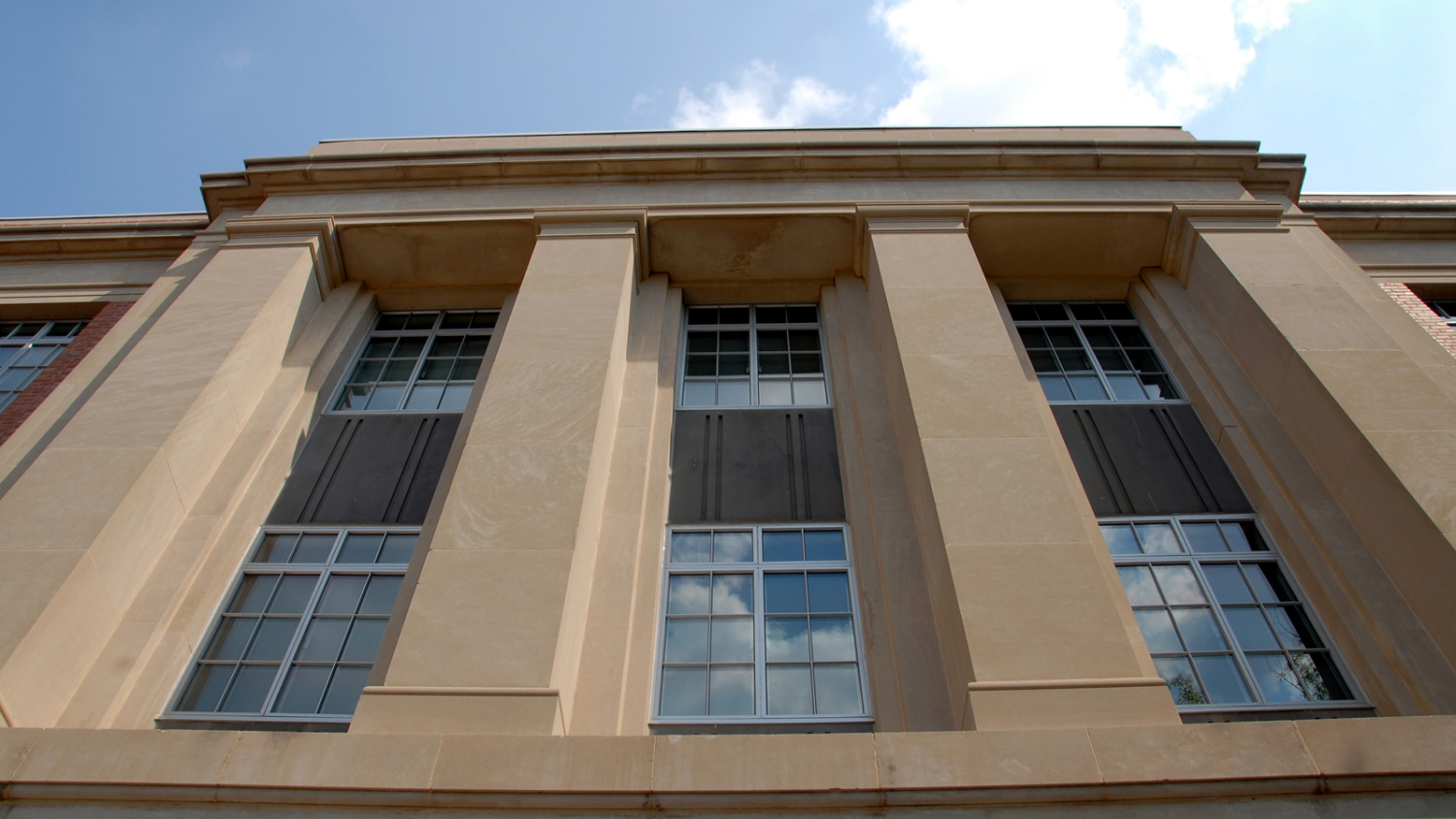My Summer Internship at Reynolda House Museum of American Art
This post was written by Evan Stevens, a third-year undergraduate student who is double majoring in History & Political Science with a minor in International Studies. Last Summer he completed an internship at Reynolda House Museum of American Art for his HI 390: Internship in History course.
 This summer, I had the pleasure of being an education intern at the Reynolda House Museum of American Art in Winston-Salem, North Carolina. The Reynolda House is part of a historic country estate that was built in 1917 by R.J. Reynolds and his wife Katharine Reynolds, later becoming an art museum in 1967. The American art in the Reynolda collection extends from the colonial period to the present, including portraits by Gilbert Stuart and Georgia O’Keeffe among many other paintings, statues and prints. Reynolda also displays its original early 20th-century furnishings and has much to tell about the Reynolds family and those who worked on the estate. Being able to work on site at a museum is something I was very enthusiastic to do as it provides hands-on knowledge you can’t always get in a classroom environment. Through interning here, I hoped to gain real-world experience with museum programming, and Reynolda offered that and opportunities suitable for my career aspirations to become a museum educator.
This summer, I had the pleasure of being an education intern at the Reynolda House Museum of American Art in Winston-Salem, North Carolina. The Reynolda House is part of a historic country estate that was built in 1917 by R.J. Reynolds and his wife Katharine Reynolds, later becoming an art museum in 1967. The American art in the Reynolda collection extends from the colonial period to the present, including portraits by Gilbert Stuart and Georgia O’Keeffe among many other paintings, statues and prints. Reynolda also displays its original early 20th-century furnishings and has much to tell about the Reynolds family and those who worked on the estate. Being able to work on site at a museum is something I was very enthusiastic to do as it provides hands-on knowledge you can’t always get in a classroom environment. Through interning here, I hoped to gain real-world experience with museum programming, and Reynolda offered that and opportunities suitable for my career aspirations to become a museum educator.
Because my internship specifically dealt with the education department, I was fortunate to be heavily involved in all kinds of programming that went on at the museum. Much of Reynolda’s educational programs are tailored towards children and their accompanying adult, such as Family First Workshops. These events provide an opportunity for kids to do a hands-on art activity with their adult. All the events that I assisted with allowed me to see the process of how museum events are organized and carried out. I also gained classroom experience by helping with a weeklong summer camp called Art Adventures where I worked as an assistant to an art teacher making clay birdhouses with a different age group each day (K-5th graders). We related our craft to artworks in the collection by leading the kids around the house to show them these connections. Assisting with this summer camp helped push me to become better at teaching a younger audience in a museum setting.
 During my internship, one of my favorite things to do was give tours to visitors. I loved interacting with the public in this capacity and teaching them about the art and the house’s history. My supervisors provided me with readings that were helpful in gaining a deeper insight into the story of Reynolda and how to interact with its collection. To learn more about R.J. Reynolds and his family I read Reynolda: A History of an American Country House. Barbara Mayer’s book highlights the evolution of the Reynolda House as it was passed down through the family while telling interesting anecdotes about those that lived and worked within it. My other readings in preparation for giving tours dealt with different ways to educate in a museum environment. They were extraordinarily helpful in providing me ideas on how to engage with Reynolda’s art and tell the story of the estate.
During my internship, one of my favorite things to do was give tours to visitors. I loved interacting with the public in this capacity and teaching them about the art and the house’s history. My supervisors provided me with readings that were helpful in gaining a deeper insight into the story of Reynolda and how to interact with its collection. To learn more about R.J. Reynolds and his family I read Reynolda: A History of an American Country House. Barbara Mayer’s book highlights the evolution of the Reynolda House as it was passed down through the family while telling interesting anecdotes about those that lived and worked within it. My other readings in preparation for giving tours dealt with different ways to educate in a museum environment. They were extraordinarily helpful in providing me ideas on how to engage with Reynolda’s art and tell the story of the estate.
I also had the opportunity to shadow docents to see the ways different tours could be led. I learned how to make a tour engaging, whether it be through asking questions about the house to developing intriguing methods of discussing a work of art. The latter skill improved through conducting visual inquiries, where I would lead a discussion of a work of art with my fellow interns and my supervisors. Once I was able to give tours on my own, I primarily did so for younger audiences. It was entertaining to see their surprise at learning facts like the cost of the huge Aeolian organ ($30,000 in 1917) and the creative ways they engaged with the art.
In addition to helping lead tours around the house, one of the two projects I completed while at Reynolda was helping revamp their Christmas tour. I was tasked with finding ways to engage the senses of those on the tour. After reading over the script, I wrote down my ideas, one of which dealt with food. Now of course food can’t be in the museum space (a curator’s worst nightmare!) but I thought old recipes would be pertinent to give visitors. Reynolda had a full-time kitchen staff while the Reynolds family lived there, and I determined that it could be a good segue to highlight their role in the Reynolda story. I was extremely fortunate to go down to the archives, where I learned how to properly handle materials as I poured over old recipe books and note cards. The archivist was very helpful and showed me a lot about the space, and I was able to find materials that would be useful to add to the Christmas tour.
 I also developed an art activity for an upcoming Reynolda On the House Spring 2024 exhibition on Imogen Cunningham. Cunningham was a significant photographer from the early 20th century known for her distinct style of playing with light in black and white photos. My activity has you create a cardboard camera which you can then decorate with a collage of Cunningham’s work and other black and white photos within the Reynolda collection. In this way, her work is tied to the story of Reynolda, and you can take “photos” in a similar way to how Imogen Cunningham did. This was a fun project to take part in that helped me tap into my creative side. Both this project and the Christmas tour project were beneficial in putting what I had learned to the test, allowing me to develop unique skills around event planning in a museum environment.
I also developed an art activity for an upcoming Reynolda On the House Spring 2024 exhibition on Imogen Cunningham. Cunningham was a significant photographer from the early 20th century known for her distinct style of playing with light in black and white photos. My activity has you create a cardboard camera which you can then decorate with a collage of Cunningham’s work and other black and white photos within the Reynolda collection. In this way, her work is tied to the story of Reynolda, and you can take “photos” in a similar way to how Imogen Cunningham did. This was a fun project to take part in that helped me tap into my creative side. Both this project and the Christmas tour project were beneficial in putting what I had learned to the test, allowing me to develop unique skills around event planning in a museum environment.
One aspect of this internship that was extremely useful was my exposure to all aspects of working within a museum beyond the departments we worked in. The other interns and I had informational interviews with workers all across the museum, from collections to the head curator to the facilities team. It helped me gain a better idea of what I was drawn to beyond the education department and see that I had more than one way to enter the museum field. Each person gave valuable advice and tips that I will keep in mind as I move further along in my career. My supervisors also had us travel to places beyond the Reynolda House. We went to both smaller historic sites and larger art museums and talked to those who worked there to find out how differently they were run in comparison to Reynolda. It was eye-opening and informative to see the wide array of ways museums can be organized based on their goal and size.
My internship at the Reynolda House equipped me with skills and knowledge that can be applicable to the museum field. As someone who is interested in getting their masters in either Museum Studies or Public History, this internship provided invaluable experience that will benefit me as I move along in my academic career. I would highly recommend this opportunity to anyone within the History department at NC State, as it’s an internship that enhances a plethora of abilities that can be useful in this discipline.


